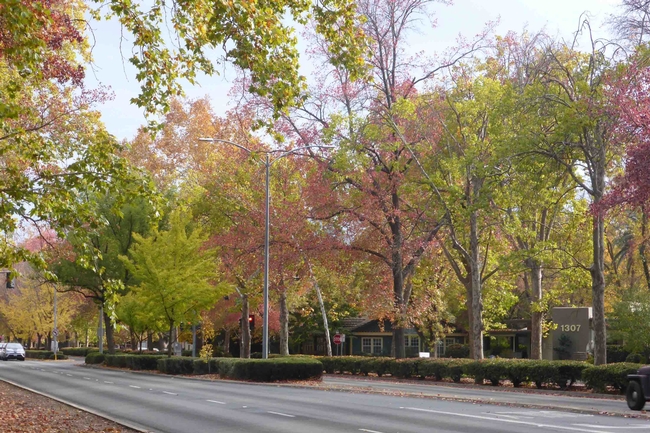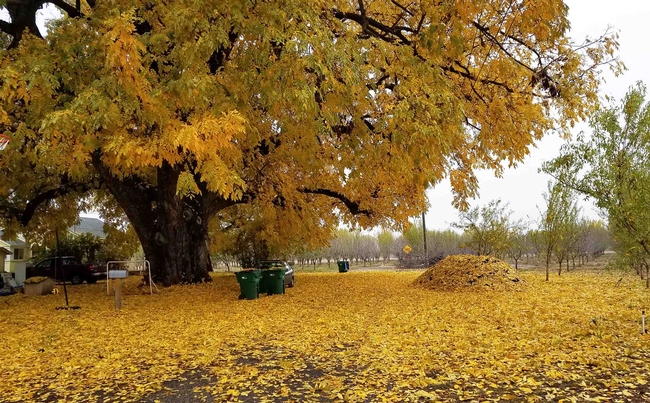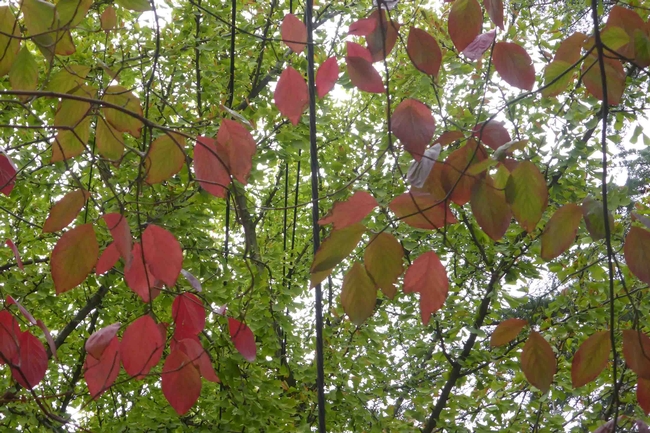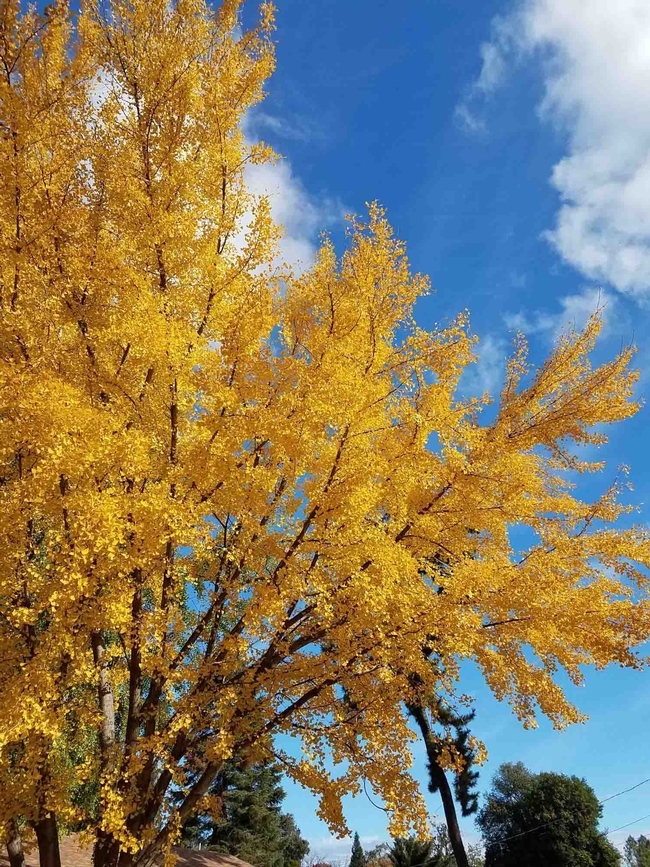For many of us in the North State, Autumn is our favorite time of year. The heat of summer is past, and deciduous trees put on a spectacular show of deep reds, yellows, and oranges. The intensity of this show, however, is not consistently the same each year. What makes the colors of autumn leaves vary in depth of color from year to year?
Along the Esplanade in November, J.C. Lawrence
Leaves on huge black walnut tree, J. Alosi
Deciduous trees begin to release their leaves when cool temperatures trigger a hormone that sends a chemical message to the leaves to “let go.” Located where the leaf stem meets the branch is a thin, bumpy line of microscopic cells called Abscission cells. These cells “cut” the leaf away from the stem when they receive that message. When the air moves them, these dangling leaves fall away. If the abscission cells do not develop, wind will not blow the leaves off. This is why some trees keep their brightly-colored fall foliage long after most other trees have dropped their leaves.
Dogwood (foreground) & ginkgo leaves (background), J.C. Lawrence
Witch hazel leaves (Hamamelis 'Arnold Promise'), J.C. Lawrence
Scientists offer several reasons for why some trees produce the anthocyanin that leads to bright reds. Primarily, it seems that anthocyanins protect leaves from excess sunlight and enable trees to recover remaining nutrients. This helps trees prepare for the next growing season. Anthocyanins give leaves their bright shades of red and purple. So, thanks to the warm days and cool nights we had in the early weeks of October this year, we are enjoying a pretty good show of vibrant leaf color right now.
Golden leaves of a ginkgo, J. Alosi




